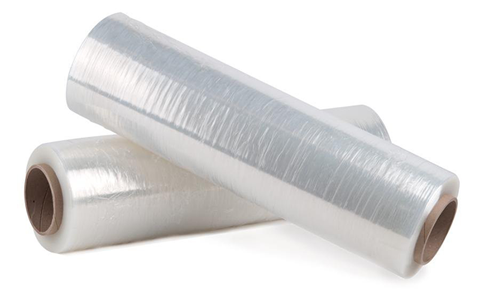
Cling Wrap (film)

Clingwrap is a petroleum-based product and contributes to environmental degradation.
Cling wrap is commonly made out of PVC (Polyvinylidene Chloride). LDPE (Low-Density Polyethylene) is now more popular as it is considered safer for the body. However LDPE plastic wrap has less "cling". In 2004 one US brand changed to using LDPE due to environmental concerns with the chloride associated with PVC plastic wrap.
Cling wrap, plastic wrap, cling film, shrink wrap, Gladwrap or food wrap.
Plastic wrap is made by an extrusion process where granules of plastic are melted and forced through a die to form a bubble. The bubble is then collapsed between metal rollers to form a thin film. This plastic film is unrolled, cut, and rerolled onto cardboard tubes.
Biodegradable alternatives are available manufactured from renewable raw materials (without plasticisers or additives that can transfer to foods). These can be composted at higher than 60C temperature within 6 months, though home composts are usually less than 60C so would likely take longer.
Read how this New Zealand family ditched clingwrap for good.
Reduce the need for cling wrap by using containers with lids.
Beeswax wraps are great as covers and pockets. Here's a DIY link.
Elasticated cloth bowl covers are a great alternative too.
Cling wrap can be rinsed, dried and reused many times.
Clean cling wrap can be recycled in the soft plastic receptacles at Countdown and The Warehouse.
Plastic cling wrap can take between 10 to 1000 years to biodegrade. Please keep out of landfill as long as possible.